#Giacomo Cavedone
Text
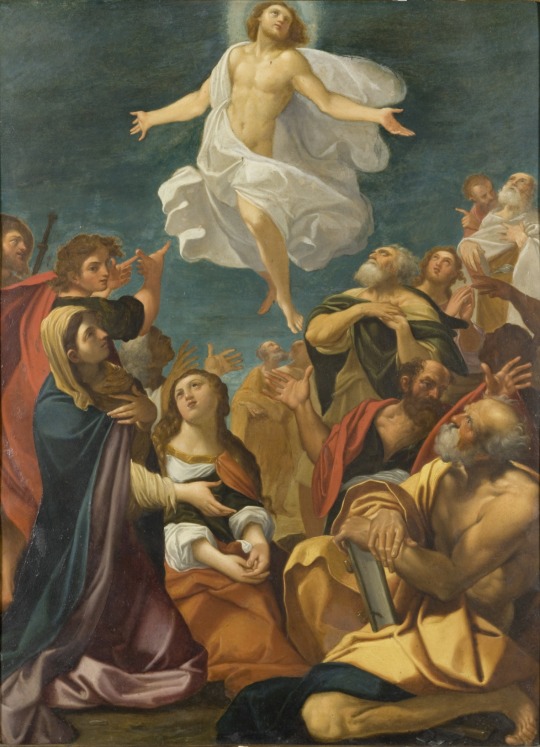
Ascension of Christ, Giacomo Cavedone, ca. 1640
#art#art history#Giacomo Cavedone#religious art#Christian art#Christianity#Catholicism#Ascension of Christ#Baroque#Baroque art#Italian Baroque#Italian art#17th century art#oil on copper#Los Angeles County Museum of Art#LACMA
95 notes
·
View notes
Text

Cavedone, Giacomo. Ascension of Christ. circa 1640. [Oil on copper]. LACMA Ahmanson Building.
92 notes
·
View notes
Text
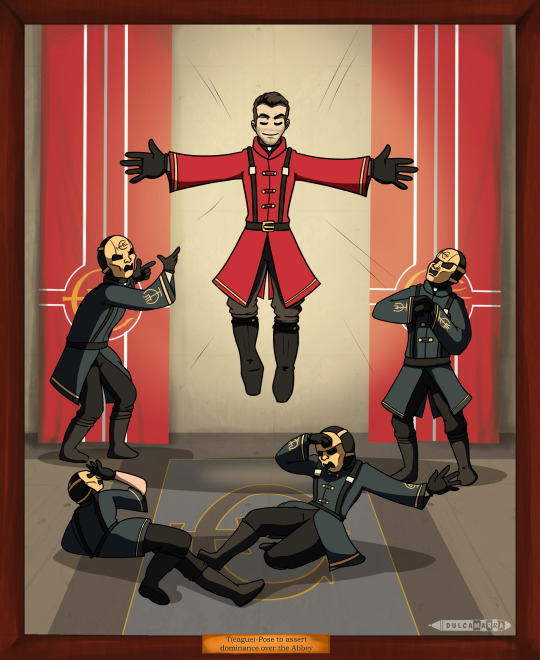
It was supposed to be a "T(eague)-pose to assert dominance over the Abbey" but I got carried away and went full christian Renaissance painting.
Inspired by The Transfiguration of Jesus by Raphael and the Ascension of Christ by Giacomo Cavedone
46 notes
·
View notes
Text
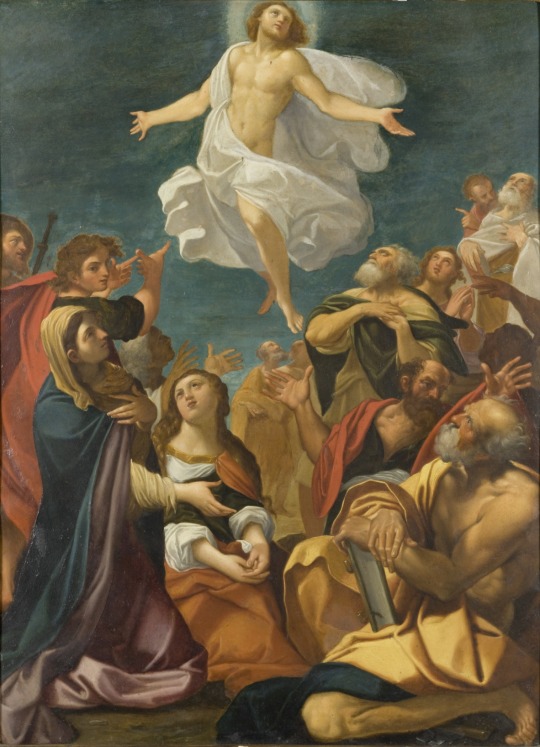
Los once discípulos fueron a Galilea, a la montaña donde Jesús los había citado. Al verlo, se postraron delante de Él; sin embargo, algunos todavía dudaron.
Acercándose, Jesús les dijo: «Yo he recibido todo poder en el cielo y en la tierra. Vayan, y hagan que todos los pueblos sean mis discípulos, bautizándolos en el nombre del Padre y del Hijo y del Espíritu Santo, y enseñándoles a cumplir todo lo que yo les he mandado. Y yo estaré siempre con ustedes hasta el fin del mundo».
Mt 28,16-20.
Giacomo Cavedone
La Ascensión de Jesús ,1640
Los Angeles County Museum of Art
Medium:Oil on copper
License:Courtesy of the Los Angeles County Museum of Art
5 notes
·
View notes
Text

Head of Apollo
By Giacomo Cavedone, 1608
1K notes
·
View notes
Photo
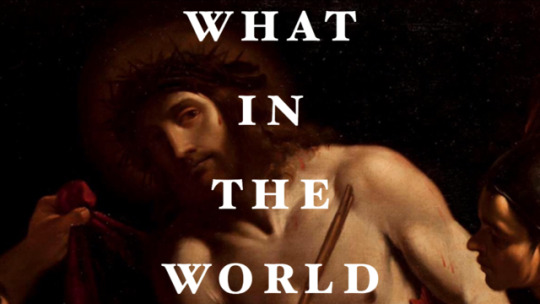

Giacomo Cavedone - The Mocking of Christ, c. 1614
The Velvet Underground - I’m Set Free
#giacomo cavedone#the mocking of christ#christianity#baroque#art#the velvet underground#music#i just like making these and i think they look okay i don't know what to tag them#mine#religion
3 notes
·
View notes
Photo
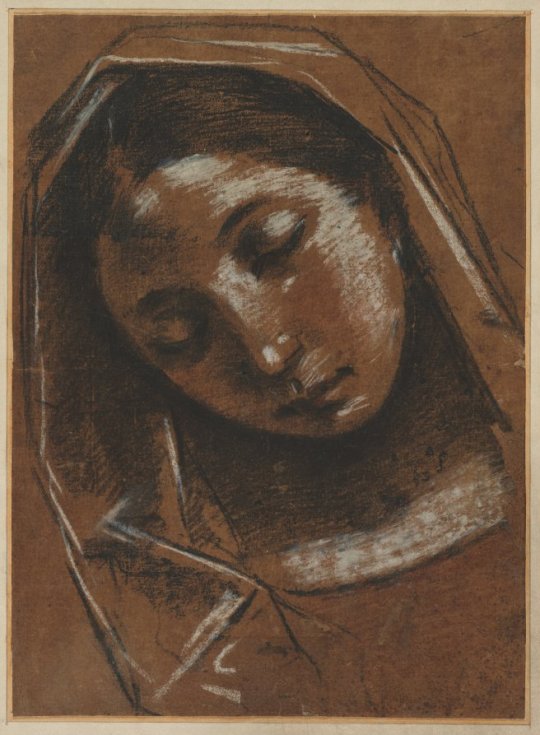
Head of the Virgin, Giacomo Cavedone , c. 1614, Cleveland Museum of Art: Drawings
Size: Sheet: 38.1 x 27.8 cm (15 x 10 15/16 in.); Secondary Support: 43.9 x 34.5 cm (17 5/16 x 13 9/16 in.)
Medium: black crayon (rubbed in places) with red chalk, heightened with white crayon
https://clevelandart.org/art/1979.90
5 notes
·
View notes
Photo

A Young Priest, Giacomo Cavedone, 1630–1660, Smithsonian: Cooper Hewitt, Smithsonian Design Museum
Size: H x W: 30.2 × 20.8 cm (11 7/8 × 8 3/16 in.)
Medium: Charcoal with white heightening on rough grey paper
https://collection.cooperhewitt.org/view/objects/asitem/id/10944
2 notes
·
View notes
Photo

Ascension of Christ, Giacomo Cavedone, ca. 1640
#art#art history#Giacomo Cavedone#religious art#Biblical art#Christian art#New Testament#Gospels#Ascension of Christ#Baroque#Baroque art#Italian Baroque#Italian art#17th century art#Los Angeles County Museum of Art#LACMA
38 notes
·
View notes
Text
Monday's image: December 27, 2021
Jan van den Bergh, After Giacomo Cavedone, Red chalk on paper, 293 x 205 millimeters, 1614, British Museum, U.K.
#mc_embed_signup{background:#fff; clear:left; font:14px Helvetica,Arial,sans-serif; width:100%;} /* Add your own Mailchimp form style overrides in your site stylesheet or in this style block. We recommend moving this block and the preceding CSS link to the HEAD of your HTML file. */
Subscribe to Monday's image RSS
#JanvandenBergh#Flemishpainter#redchalkonpaper#afterGiacomoCavedone#Bologneseschool#portraiture#BritishMuseum#London#NYTimes#groupofmen#camouflagejackets#MykhailoHiraldo-Ramires#leadingatrainingcourse#Kyiv#Ukraine#country'sdefenseplan#Ukraine'sCiviliansStaff#ResistanceinWaiting#TeachersAccountantsandWaitresses#PrepforanInsurgency#learncombatskills#NewVariantRisk#InNursingHomes#BoostersLaginNewYork#AmidOmicronSurge#SeaCrestNursingandRehabilitation#ConeyIsland#CadreofExpertWitnesses#HelpsClearPoliceinCourt#SameTightNetworkThatTrainsOfficers
0 notes
Photo





By Adriana Baranello and Maggie Bell
Saint Clare of Assisi (b. 16 July 1194 in Assisi) died on 12 August 1253 and was canonized in 1255. She was the eldest child of Favorino Schiffi, Count of Sasso-Rosso. Though born into a life of luxury, Clare devoted herself to religious study very early, and took her vows at age 18. Her vows were taken in front of Saint Francis on 20 May 1212, Palm Sunday. Saint Clare was one of Saint Francis’s earliest followers, and founder of the Franciscan Order’s sister Order, the Order of Poor Ladies more commonly called the Poor Clares, while abbess of the monastery of San Damiano. St Clare authored the Rule of Life for the order; it is the first monastic rule known to be written by a woman.
The Poor Clares themselves did not have much control over the images commissioned to decorate their churches, since these were paid for most often by families and confraternities. However, these images often depicted narrative scenes from the life of Clare of Assisi, like the predella painting by Giovanni di Paolo, which represents Clare blessing the bread for the Eucharist. After her blessing, the cross was imprinted so intensely on the bread that it broke into four quarters. Jacopo da Voragine’s Golden Legend was a major source of iconography for Clare, who was typically shown wearing the costume of the order: dark grey or grey–brown habit and veil with white lining, tied with a knotted cord as a girdle. She is often shown holding a monstrance, referring to a story in the Legend in which Clare wards off Saracen soldiers prepared to attack Assisi.
Further Reading:
Brenda M. Bolton. "Poor Clares, Order of." Grove Art Online. Oxford Art Online. Oxford University Press, accessed August 7, 2017, http://www.oxfordartonline.com/subscriber/article/grove/art/T068687.
Detail of Simone Martini’s frescoes (1312-1320) in the Lower Basilica in the the Papal Basilica of St. Francis of Assisi (the Church of San Francesco), Assisi featuring St Clare with Saints Elizabeth of Hungary and Louis of France
The Madonna and Child, with Saints William of Aquitaine, Clare, Anthony of Padua and Francis, Garofalo (Benvenuto Tisi), c. 1517-1518, oil on wood, National Gallery London
Giovanni di Paolo, Saint Clare of Assisi Blessing the Bread before Pope Innocent IV, predella panel, ca. 1455, Yale University Art Gallery, Early European Art
Saint Clare of Assisi, kneeling and holding a monstrance, attributed to Giacomo Cavedone (1577-1660), drawing, Victoria and Albert Museum, London, United Kingdom
#italy#saints#poor clares#clare of assisi#women#iconography#art#painting#middle ages#renaissance#saint francis#religious art
43 notes
·
View notes
Photo

Giovanni Andrea Sirani (Sep 4, 1610 – May 21, 1670) was an Italian Baroque painter from Bologna.
var quads_screen_width = document.body.clientWidth; if ( quads_screen_width >= 1140 ) { /* desktop monitors */ document.write('<ins class="adsbygoogle" style="display:inline-block;width:300px;height:250px;" data-ad-client="pub-9117077712236756" data-ad-slot="1897774225" >'); (adsbygoogle = window.adsbygoogle || []).push({}); }if ( quads_screen_width >= 1024 && quads_screen_width < 1140 ) { /* tablet landscape */ document.write('<ins class="adsbygoogle" style="display:inline-block;width:300px;height:250px;" data-ad-client="pub-9117077712236756" data-ad-slot="1897774225" >'); (adsbygoogle = window.adsbygoogle || []).push({}); }if ( quads_screen_width >= 768 && quads_screen_width < 1024 ) { /* tablet portrait */ document.write('<ins class="adsbygoogle" style="display:inline-block;width:300px;height:250px;" data-ad-client="pub-9117077712236756" data-ad-slot="1897774225" >'); (adsbygoogle = window.adsbygoogle || []).push({}); }if ( quads_screen_width < 768 ) { /* phone */ document.write('<ins class="adsbygoogle" style="display:inline-block;width:300px;height:250px;" data-ad-client="pub-9117077712236756" data-ad-slot="1897774225" >'); (adsbygoogle = window.adsbygoogle || []).push({}); }
He is best known as the father of the female painter Elisabetta Sirani. Sirani trained initially with Giacomo Cavedone, then worked in the studio with Guido Reni. He became entangled in various conspiracies circling around the death of his daughter in 1665. While Giovanni accused a maid of poisoning his daughter, others saw Giovanni as the origin of death from stomach ulcer by overwork.
Giovanni Andrea Sirani was originally published on HiSoUR Art Collection
0 notes
Photo

Head of the Virgin, Giacomo Cavedone , c. 1614, Cleveland Museum of Art: Drawings
Size: Sheet: 38.1 x 27.8 cm (15 x 10 15/16 in.); Secondary Support: 43.9 x 34.5 cm (17 5/16 x 13 9/16 in.)
Medium: black crayon (rubbed in places) with red chalk, heightened with white crayon
https://clevelandart.org/art/1979.90
2 notes
·
View notes
